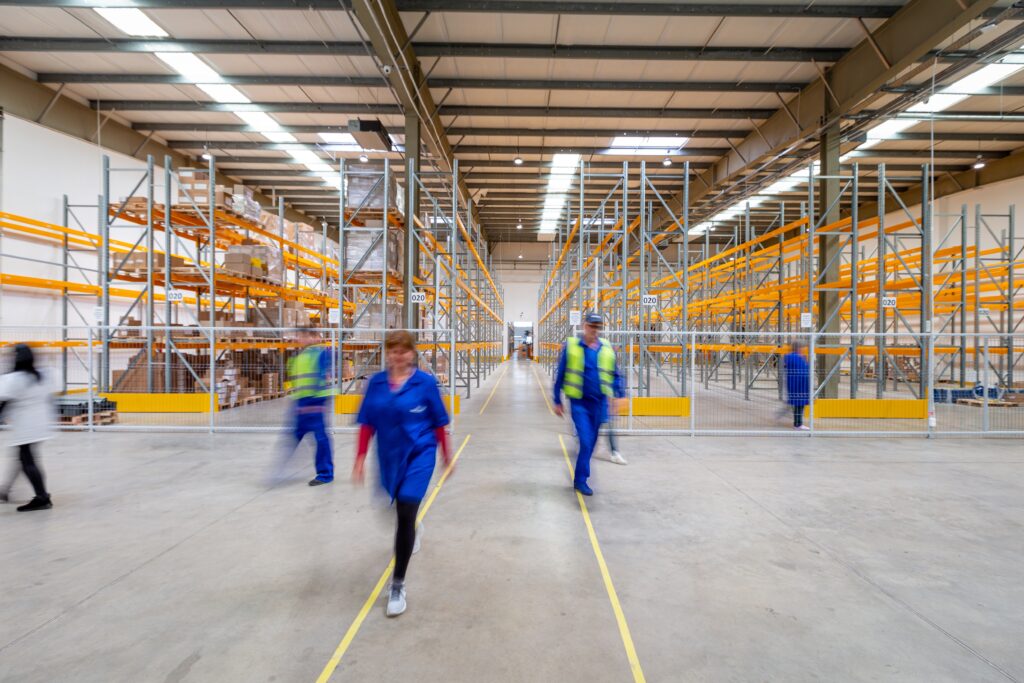
Warehouses are bustling hubs of activity, with goods moving in and out, machinery operating, and workers navigating through aisles. In this dynamic environment, safety is paramount. Ensuring the well-being of warehouse workers not only protects individuals but also contributes to the overall efficiency and success of the operation. This comprehensive guide is designed to equip both new and experienced warehouse workers with the knowledge and practices necessary for a safe and secure work environment.
Prioritise Training and Orientation
Safety begins with knowledge. All warehouse workers should undergo thorough training and orientation sessions that cover the specific safety protocols of the facility. This includes understanding the operation of machinery, emergency procedures, and the proper use of personal protective equipment (PPE). Regular refresher courses can help reinforce these essential safety practices.
Invest in High-Quality PPE
Personal Protective Equipment is the frontline defence against workplace hazards. Warehouses may require various types of PPE, including steel-toed boots, high-visibility vests, safety glasses, and gloves. Employers should provide workers with the necessary PPE and ensure that it is regularly inspected for wear and tear.
Keep Aisles Clear and Organized
A cluttered workspace is a breeding ground for accidents. Maintain clear and organised aisles to facilitate smooth traffic flow and reduce the risk of trips, slips, and falls. Implement a system for promptly removing any obstacles, spilled materials, or packaging debris to ensure a hazard-free working environment.
Utilise Proper Lifting Techniques
Manual lifting is a common task in warehouses, and improper techniques can lead to musculoskeletal injuries. Train workers in proper lifting techniques, emphasising the use of leg muscles rather than the back. Encourage the team to ask for assistance or use mechanical aids like pallet jacks or forklifts for heavy or awkward loads.
Establish Traffic Control Measures
Warehouses often involve the movement of various vehicles through areas of high racking, including forklifts, pallet trucks, and order pickers. Implement clear traffic control measures, such as designated pedestrian walkways, signage, and speed limits, to prevent collisions and ensure the safety of both workers and equipment operators.
Regularly Maintain and Inspect Equipment
Faulty equipment poses a significant risk to warehouse safety. Establish a routine maintenance schedule for all machinery and conduct regular inspections of all warehouse racking to prevent any defects becoming a danger to workers. Any defective equipment should be promptly repaired or replaced. This proactive approach ensures that tools and machinery are in optimal working condition, reducing the likelihood of accidents.
Implement Emergency Response Protocols
Prepare workers for emergencies by establishing clear emergency response protocols. Conduct regular drills to ensure that everyone knows the procedures for evacuations, first aid, and how to use firefighting equipment. Well-prepared teams can respond effectively to unexpected situations, minimising potential harm.
Provide Adequate Lighting
Good visibility is crucial for safe warehouse working. Ensure that all areas of the warehouse, including aisles, storage areas, and loading docks, are well-lit. Adequate lighting not only reduces the risk of accidents but also enhances overall efficiency by making it easier to read labels, identify products, and navigate the workspace.
Encourage Open Communication
A culture of safety thrives on open communication. Encourage workers to report any safety concerns, hazards, or near misses promptly. Establishing a reporting system that allows employees to share observations without fear of reprisal fosters a proactive approach to addressing potential risks before they escalate.
Emphasise Mental and Physical Well-Being
Warehouse work can be physically demanding and mentally taxing. Provide opportunities for rest breaks and encourage workers to listen to their bodies. Rotate tasks to prevent repetitive strain injuries, and offer wellness programs that address overall health. A workforce that is physically and mentally well is better equipped to maintain focus and adhere to safety protocols.
Conclusion
Safety in the warehouse is a shared responsibility that extends from employers to individual workers. By prioritising comprehensive training, maintaining a vigilant eye on the work environment, and fostering a culture of safety, warehouses can become not only hubs of productivity but also beacons of well-being. A commitment to safety not only protects the workforce but also ensures the longevity and success of the entire operation. In the world of warehousing, safety is not just a guideline; it’s a fundamental part of the operational blueprint that keeps the wheels turning smoothly.
